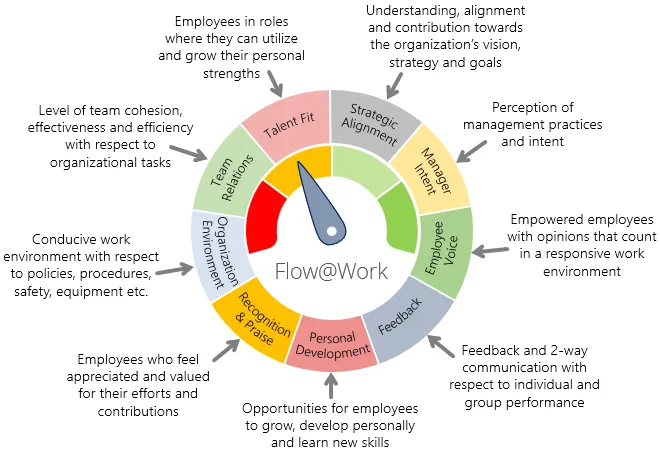
In business, measuring and tracking key outcomes such as revenues and profit is imperative to gauge improvement or growth. However, if profit does not reflect the projections or expectations it would signal an issue. Understanding the underlying factors (drivers) that contribute to these outcomes (indicators) is crucial for implementing effective solutions. This principle is not only applicable in financial analysis, but is equally critical in evaluating and enhancing employee engagement.
Separating Indicators from Drivers
Indicators of employee engagement, such as job satisfaction or commitment to the organization, serve as the initial signifiers of an organization's state of employee engagement. However, these indicators, much like a company's profit margins, only tell part of the story. They show whether there is a problem or not, but fail to explain the reasons behind it.
For instance, a survey question like “How satisfied are you with your company as a place to work?” may reveal that employees feel discontent, but it provides no insight into the factors causing this dissatisfaction. Without understanding these underlying drivers—whether they be management practices, lack of career development opportunities, or workplace environment—any attempts at improvement would be ineffective.
The Pitfalls of Combining Indicators and Drivers
The failure to differentiate between the indicators of engagement and their drivers can lead to misguided strategies that, at best, fail to address the core issues and, at worst, exacerbate existing problems. It is akin to a doctor treating the symptoms of a disease without diagnosing its cause; the treatment may provide temporary relief but does little to eradicate the underlying condition.
Flow@Work Engagement Model: A Scientific Approach
Recognizing this gap, Mindset’s Flow@Work engagement model offers a scientific approach by distinguishing between the indicators (outcomes) of engagement and the drivers (factors) that influence these outcomes. This approach employs six scientifically designed survey questions to assess engagement levels accurately throughout the organization, providing a clear picture of the organization's current state.

More importantly, the model identifies nine statistically validated drivers of engagement, enabling organizations to pinpoint exactly what influences engagement levels. This precision allows for targeted interventions, tailored to address the specific challenges identified at the team, leadership, and organizational level, thereby maximizing the impact of engagement initiatives.
Conclusion: A Path Forward
By clearly separating the outcomes (indicators) and factors (drivers) of employee engagement, the Flow@Work model equips organizations with the data needed in precise diagnosis for strategy and action planning. This approach not only ensures that efforts are directed toward the most impactful areas, but also fosters a culture of continuous improvement and engagement across all levels of the organization.
